'Most diverse Turner Prize to date'
 David Levene
David LeveneIt was once the domain of outrageous young artists.
But this year the Turner Prize has grown up, shining a light on overlooked older artists, unsensational subject matter and traditional methods.
The exhibition of the four shortlisted artists opens in Hull on Tuesday.
After a rule change, Hurvin Anderson and Lubaina Himid are the first over-50s to be nominated since 1991, while Andrea Buttner and Rosalind Nashashibi are both in their 40s.
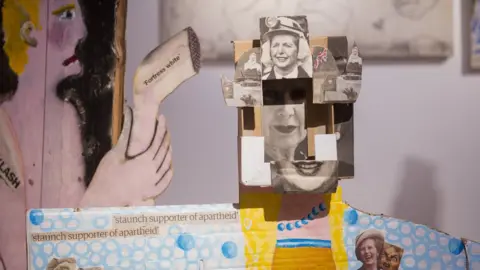 David Levene
David LeveneIn the past, the Turner Prize has been famed for works like Damien Hirst, with his cow in formaldehyde, Tracey Emin's unmade bed, and Martin Creed's The Lights Going On and Off.
Artists of any age were eligible when the prize was first launched in 1984 but in 1991, the rules changed so that only artists under 50 could be considered.
But earlier this year, the rule changed again to allow over 50s to enter.
Anderson, 52, and Himid, 63, have taken their places in this year's nominees' exhibition and are now the bookies' favourites to win.
Zanzibar-born, Preston-based Himid tackles attitudes to race, from slavery to the present day, through her tableaux of wooden figures and painted-over pottery. Anderson's vivid paintings blend his home city of Birmingham with the Jamaica of his forebears.
Tate Britain director Alex Farquharson, who is chairing this year's jury, said there was a desire to celebrate artists who had previously been neglected by the mainstream.
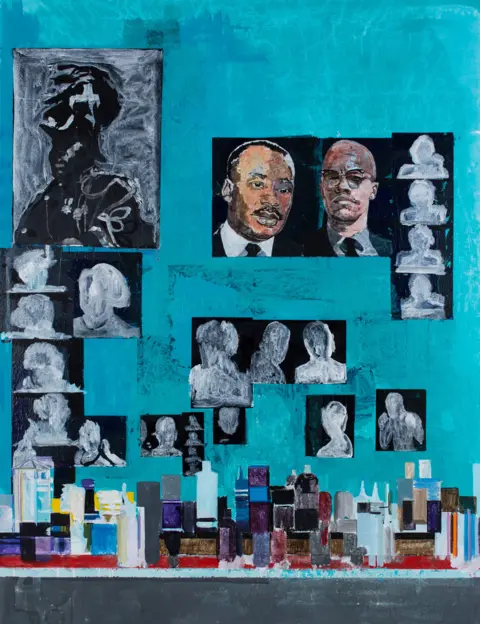 Hurvin Anderson
Hurvin Anderson"The art world is more interested than ever before in important but overlooked figures, and work that was made in fairly recent times that didn't have the visibility for whatever reason," he said.
"Sometimes that's to do with its politics, sometimes it's to do with the identity of the artist - you see, for example, a lot of work by older women being revisited by curators today. And particularly in the case of artists of colour and women artists."
Farquharson said this year's was "the most international and diverse Turner Prize to date".
He explained: "There is an artist from a Jamaican background, from an Irish and Palestinian background, an artist born in Tanzania and an artist born in Germany. But they're all part of the British art scene."
Farquharson also said there is "quite a lot of painting" in the exhibition - unlike in some previous years. He said artists no longer feel that unusual materials and methods are any more innovative than more traditional artforms.
The exhibition is at Hull's Ferens Gallery as part of the UK City of Culture celebrations. The winner will be named on 5 December and will receive £25,000.
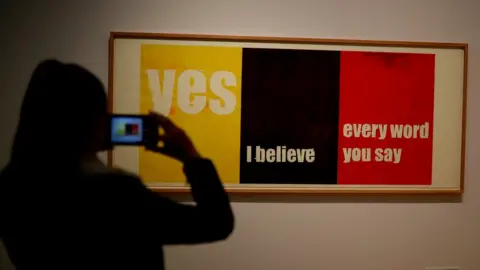 Reuters
Reuters
Analysis - BBC arts editor Will Gompertz
This year's Turner Prize is an unmitigated disaster for the headline writers of Fleet Street. There are no enormous backsides to riff off, or unmade beds on which to pour scorn - there's no shock, or sensation, no vulgarity or profanity.
In fact, the most remarkable thing about the 2017 Turner Prize is that it is unremarkable. All four shortlisted artists can actually paint - if they chose to do so; they largely make their own work, and the political and philosophical points they make are expressed with sense and sensibility.
I suppose a more conservative exhibition was the inevitable outcome of removing the age restriction allowing artists over 50 to be considered for inclusion - as indeed two have this year. The Turner Prize has grown up.

Find out more about the nominees
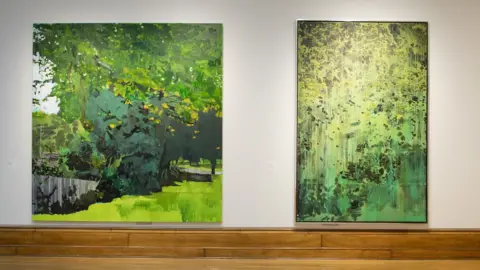 David Levene
David LeveneHurvin Anderson
For the Turner Prize, having paintings on walls is so traditional that it almost feels radical. Anderson's images are split roughly into two types. Firstly there are lush, verdant rainforest-esque vistas, apparently inspired by seeing boys climbing trees in Jamaica and his brother's outings to scrump apples in Birmingham.
Then there are set pieces inside barber shops, with bright blocks of colour framing lonely customers and empty chairs. One, titled Is It Okay To Be Black?, is a half-remembered view of a barber shop's wall featuring pinned photos of Martin Luther King and Malcolm X.

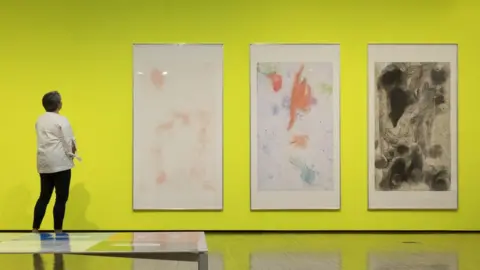 David Levene
David LeveneAndrea Buttner
German-born Buttner's work is typical of the Turner Prize's newfound humility - her signature pieces are nine simple, line-drawn, black-and-white woodcuts of beggars, while her other work shows a fascination with the lowly and mundane.
One wall is covered in bright yellow high-vis jacket material, upon which are hung what look like three abstract paintings, but which turn out to be enlarged fingerprints from a smartphone. She is also showing a 1990 peace display dedicated to philosopher and activist Simone Weil, which has been borrowed from an anti-war museum in Berlin.

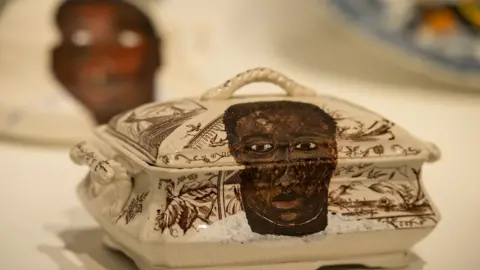 AFP
AFPLubaina Himid
Himid's section contains work from the 1980s to today, reflecting her unsung role in art over the past 30 years. The centrepiece is 1986's The Fashionable Marriage, based on William Hogarth's Marriage a a la Mode, which features a cast of cut-out characters including a flirting Margaret Thatcher and Ronald Reagan.
There are also porcelain dinner sets, found in junk shops. Himid has painted images of black slaves on some and Hogarth-inspired aristocrats - some of whom are vomiting at the news of the abolition of slavery - on others. She has also painted over parts of newspaper pages in a witty comment on the way black people are illustrated in the media.

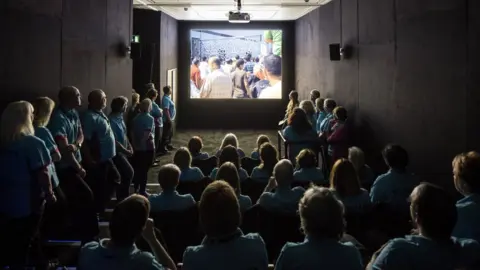 David Levene
David LeveneRosalind Nashashibi
Nashashibi has turned one wing of the gallery into two mini cinemas, complete with reclaimed vintage cinema seats. They are screening her two meditative films, which give an insight into life in two different parts of the world.
Electric Gaza is a collection of everyday scenes from the Gaza Strip - from horses being bathed in the sea to people going about their business on unkempt streets - all interspersed with animations. It's meant to show an alternative to the usual depiction of Gazans as victims. The other, Vivian's Garden, shows snapshots of mother-and-daughter artists in Guatemala.

Follow us on Facebook, on Twitter @BBCNewsEnts, or on Instagram at bbcnewsents. If you have a story suggestion email entertainment.news@bbc.co.uk.
